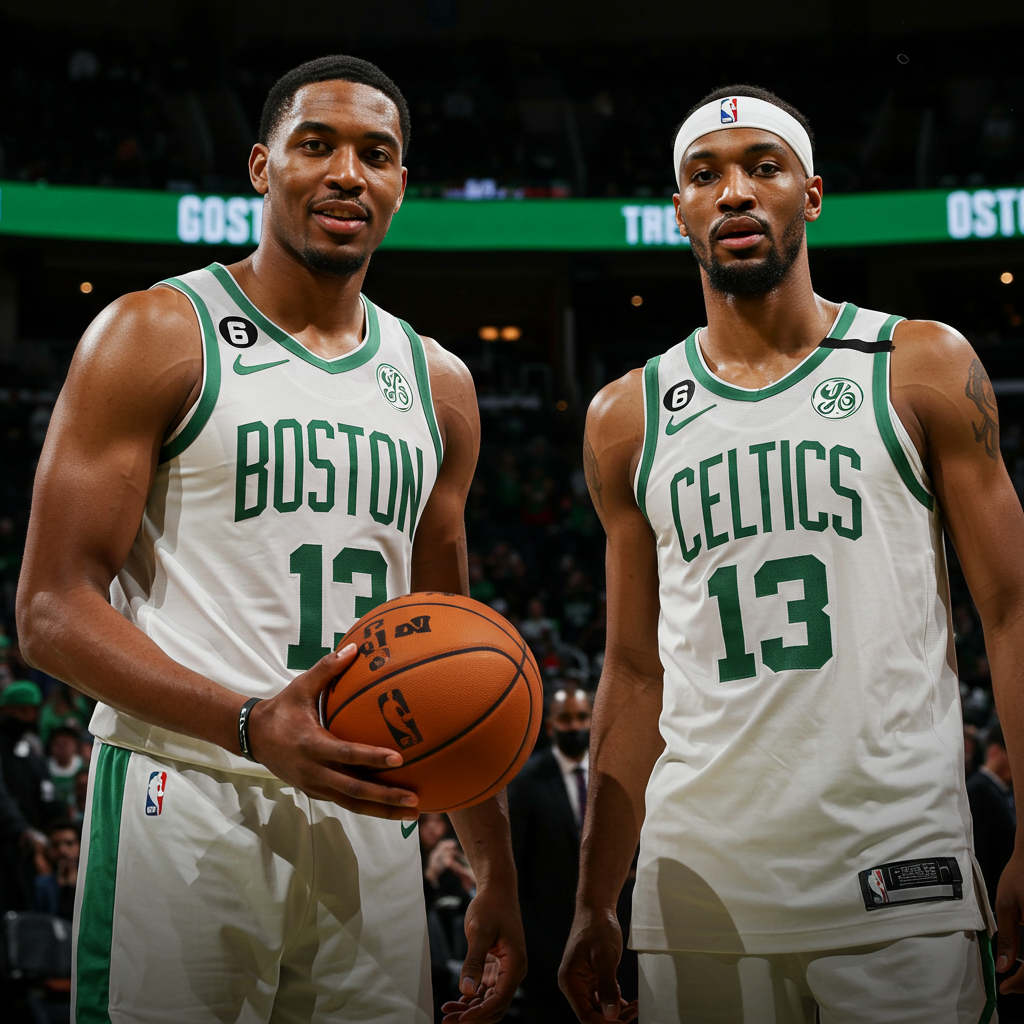The NBA offseason often brings unexpected moves, but the Boston Celtics just delivered two blockbusters that sent shockwaves through the league. In rapid succession, the team traded away key players Jrue Holiday and Kristaps Porziņģis. While surprising to some fans, these seismic shifts are reportedly just the beginning of a significant roster retooling driven primarily by the strict financial realities of the NBA’s new collective bargaining agreement (CBA).
The Financial Imperative: Escaping the Second Apron
Behind the trades lies a clear strategic goal: getting the Celtics’ payroll below the daunting “second apron” of the luxury tax. Set at approximately $207.8 million, crossing this threshold triggers severe penalties, restricting a team’s ability to make trades, sign free agents, and even impacting future draft picks. For teams exceeding the apron in consecutive years, the financial cost escalates dramatically through repeater taxes.
Last season, the Celtics were projected to incur a staggering combined salary and luxury tax bill potentially nearing $500 million under the new CBA rules. This figure was deemed “untenable,” especially after the team’s championship pursuit ended in the second round, compounded by the devastating news that superstar Jayson Tatum suffered a ruptured Achilles tendon and is expected to miss most, if not all, of the upcoming season. With Tatum sidelined, the team is no longer considered a “legit title contender” for 2025, making the huge financial outlay difficult to justify. The team’s new owner is also reportedly unwilling to lose money.
President of Basketball Operations Brad Stevens faced the challenging task of drastically reducing costs while attempting to maintain some level of competitiveness. These recent trades are the direct result of that mandate.
Breaking Down the Deals
The first shoe dropped with the trade of two-time All-Star Jrue Holiday. Holiday, a valuable veteran presence, was sent to the Portland Trail Blazers for Anfernee Simons and two second-round draft picks. While Simons’ salary for next season is only about $4.7 million less than Holiday’s, the primary financial gain comes from shedding Holiday’s guaranteed $72 million in salary for the 2026-27 and 2027-28 seasons. The deal is projected to save Boston around $35 million in luxury taxes next season.
Just one day later, the Celtics completed a complex three-team trade sending Kristaps Porziņģis to the Atlanta Hawks. In return, Boston acquired veteran forward Georges Niang and a second-round pick. This move, even more impactful financially, swaps Porziņģis’s $30.7 million expiring contract for Niang’s $8.2 million salary next season, saving the Celtics $22.5 million in salary and an estimated $150 million or more in additional luxury taxes.
In total, these two trades save the Celtics over $27 million in salary and a colossal $180 million-plus in luxury taxes. The strategy paid off: Boston is now approximately $4.5-$4.6 million below the second luxury tax apron, successfully avoiding the most punitive penalties.
Beyond the Trades: What Comes Next for Boston?
Successfully ducking the second apron is a major achievement, but the offseason maneuvering is far from over. The original Yahoo article title suggested these moves were “just the beginning,” and that appears to be accurate.
Several factors indicate more changes are likely:
Free Agents: Key big men Al Horford and Luke Kornet are unrestricted free agents. Re-signing either, especially Horford, would likely push the team back over the second apron, requiring further cost-cutting elsewhere. Horford’s decision may hinge partly on Tatum’s injury timeline.
Roster Spots: Trading two starters leaves significant holes to fill. The team needs to assemble a full roster while staying financially disciplined.
- Further Salary Shedding: To maintain flexibility or prepare for future seasons, the Celtics might look to shed even more salary. Players recently acquired, like Anfernee Simons or Georges Niang, could potentially be traded again. Other players, like Sam Hauser with his recent contract extension, might also become trade candidates.
- sports.yahoo.com
- www.bostonglobe.com
- www.nbcsportsboston.com
- www.sportingnews.com
- heavy.com
While financially motivated, the goal is not a full rebuild. Stevens’s strategy appears to be “trimming the fat” to navigate the new CBA constraints while attempting to retool and remain competitive in the Eastern Conference.
The Roster Picture and Future
The updated roster sees Derrick White and Jaylen Brown remaining as key figures, alongside acquisitions like Simons and Niang. However, Tatum’s expected absence looms large, significantly impacting the team’s immediate ceiling. Porziņģis, while popular and productive (averaging 20.1 points, 7.2 rebounds, 1.9 blocks last season), also dealt with significant injuries, particularly in the 2024 playoffs, which likely factored into the decision. Niang offers solid three-point shooting (career 39%) but is a defensive downgrade from Porziņģis.
The Celtics hold the 28th and 32nd picks in the upcoming NBA Draft, plus the acquired second-rounders. These picks could be crucial for adding cost-controlled talent to fill roster spots vacated by the trades or potential free agency departures.
While “gigantic offers” for core players like Brown or White aren’t being actively sought, the team may be open to discussions if a deal could position them for contention upon Tatum’s return in 2026 or 2027. However, trading “ancillary parts” to manage payroll remains the more probable path.
Ultimately, the trades of Jrue Holiday and Kristaps Porziņģis represent a necessary, financially driven adjustment under the new NBA landscape. They’ve successfully ducked the most severe tax penalties, but the offseason construction of the Boston Celtics’ roster is still very much in progress. The next few weeks will reveal how Brad Stevens plans to finish retooling the team under these new, strict financial parameters.



